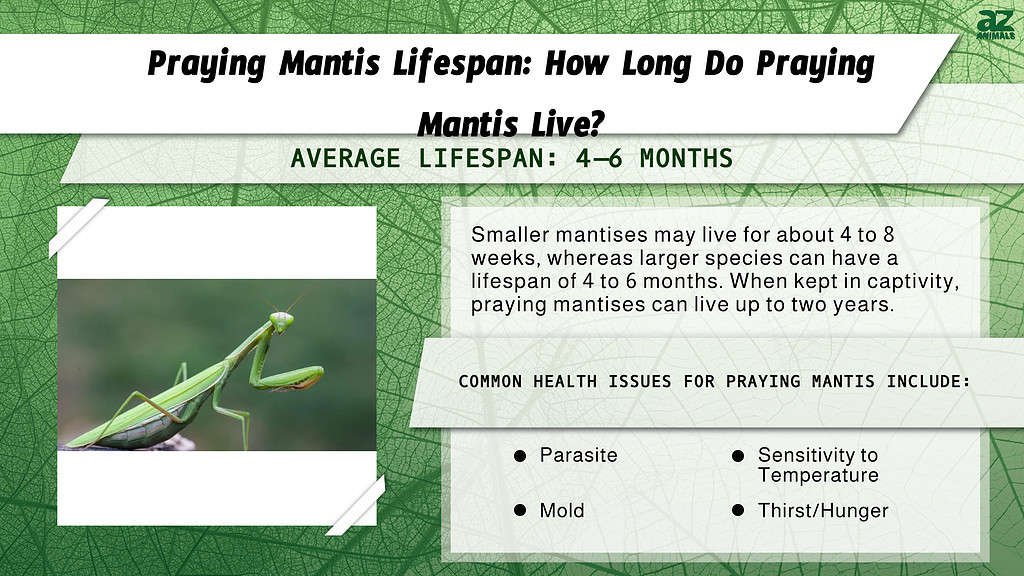
The praying mantis got its name from the Greek word mantikos, which means soothsayer or prophet. This name was given to them because of the unique way this insect rests with its forelegs clasped together. Many have described it as appearing as if the insect is praying before a deity. Along with its unique stance and name, a praying mantis’ life cycle and lifespan are also quite remarkable.
Let’s learn more about this interesting insect and how long a praying mantis typically lives.
How Long Does the Average Praying Mantis Live?
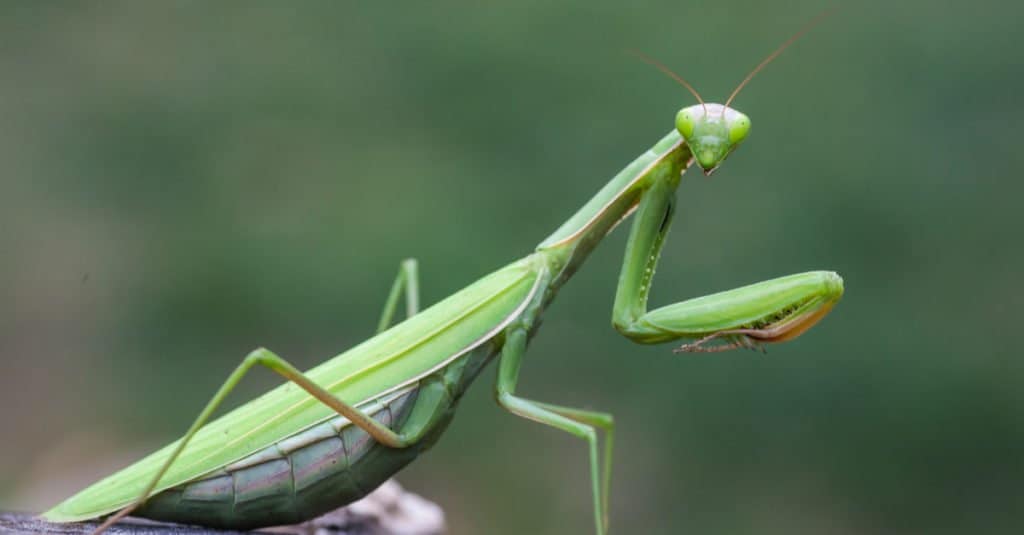
The praying mantis is an insect that can be found all over the world.
©Ryzhkov Oleksandr/Shutterstock.com
The lifespan of a mantis depends on the species; smaller ones may live 4–8 weeks, while larger species may live 4–6 months. The lifespan of a praying mantis is up to two years while in captivity. In the wild, smaller species may only live for a month while larger species live about 6 months.
The life expectancy of a praying mantis will depend on several factors, including its species and size. As a general note, a female praying mantis will often outlive the males in the species. Smaller species have a lifespan of four to eight weeks, while the larger ones may live for up to four to six months. For example, a study in the Journal of Entomology and Zoology Studies on the European mantis found that the male’s average lifespan was 165 days (5 months) while females had a lifespan of 196 days. In captivity, however, they have been recorded to live up to two years. So if you’re keeping a pet mantis, they can potentially outlive their wild brethren by a substantial amount of time!
The Life Cycle of the Praying Mantis
The praying mantis lives their lives in three stages: egg, nymph, and adult.
Egg
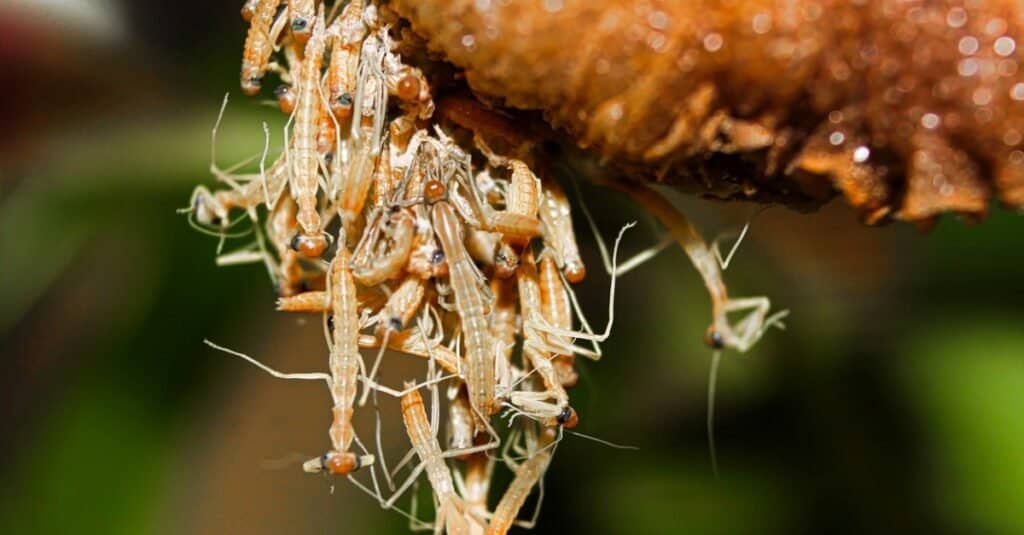
Praying mantis nymphs hatching from an ootheca.
©iStock.com/Akchamczuk
In the period right before winter, the adult female praying mantis lays 100 to 400 eggs.
The eggs are safely put on a sturdy leaf or stem with a liquid that hardens to form a protective sac structure called an ootheca. The ootheca is a protective case (extremely robust and capable of withstanding major weather fluctuations) in which the eggs will spend the winter. The nymphs hatch when the egg casings crack in mid-spring when the temperatures are warmer.
Nymph
During the beginning stages of their lives, the newly born nymphs spend some time around the egg casing. During this time, the mantis will attempt to feed on their newly hatched siblings! They will also begin to forage for tiny insects such as fruit flies. In their development, nymphs go through a series of repeated phases of growth known as instars.
At each stage, the nymphs lose their exoskeleton, a process known as molting, to allow for the development of body segments and growth in body size. Molting occurs approximately six times before they may begin the next stage of life. Other huge predators, including bats, birds, and spiders, feed on nymphs, and not all nymphs survive this stage.
Adult
Full-grown mantises range in length from 1 to 6 inches and vary in size according to the species. A praying mantis’ physical structure is similar to that of other insects, with three parts: the abdomen, the head and thorax, and the antennae that are used for sniffing. Female mantises are identifiable from males by their larger abdomens.
The praying mantis is a carnivorous bug that isn’t picky about its diet. In fact, it’ll eat just about anything that comes its way. Mantises will feed on tiny nesting birds, mice, lizards, and tree frogs in addition to small insects. When praying mantises mate, the female often eats the male mantis’ head. She then feasts on the rest of the male’s body after mating. Once she lays her eggs, the female mantis typically dies.
What Affects the Praying Mantis Lifespan?
A praying mantis’ total life expectancy is determined by a number of factors. These include the availability and quality of the food they eat. The more high-quality food they have available, the better the chances are that the praying mantis will continue to grow in size. Whether they are being kept as a pet or are living in the wild will also play a large role in their lifespan. When kept in captivity, a praying mantis will not have the threat of many natural predators that they may be hunted by.
Tips for Maximizing Your Praying Mantis’ Lifespan
Like any pet owner, you’re going to want to extend the life of your pet for as long as possible. There are several ways that you can maximize the lifespan of your praying mantis. For starters, mantids should be kept in their own tank to avoid cannibalism between two mantids. Because each praying mantis only requires a little tank, this isn’t usually difficult to achieve.
It is also important to know which species of mantis you are keeping as a pet. This is because each mantis species need a certain temperature and humidity level. Some species can be found in humid woodland environments, while others can be found in deserts or dry grasslands.
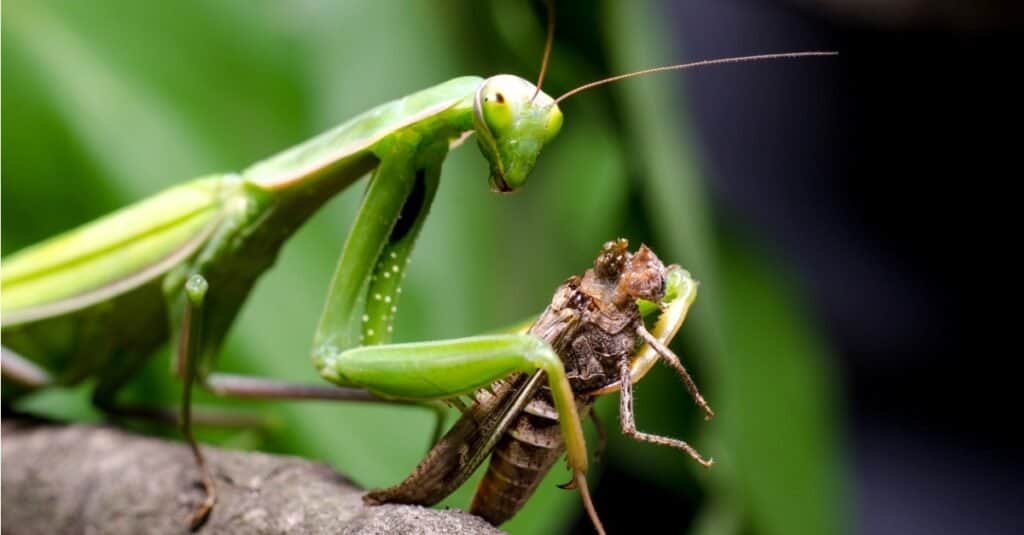
A praying mantis will only eat live insects.
©iStock.com/artas
Finally, it’s important to know how much to feed them and when. Mantises will only eat live insects as food. Flies, crickets, moths, caterpillars, locusts, and other insects are examples of insects that you can feed them. How often you have to feed your praying mantis will depend on the species, the sort of food you feed it, the mantis’s size, the mantis’s bodily state (well-fed or lean), and its life stage. Some eat every day while others will actually be harmed by daily feedings.
Fun Facts About the Praying Mantis Lifespan
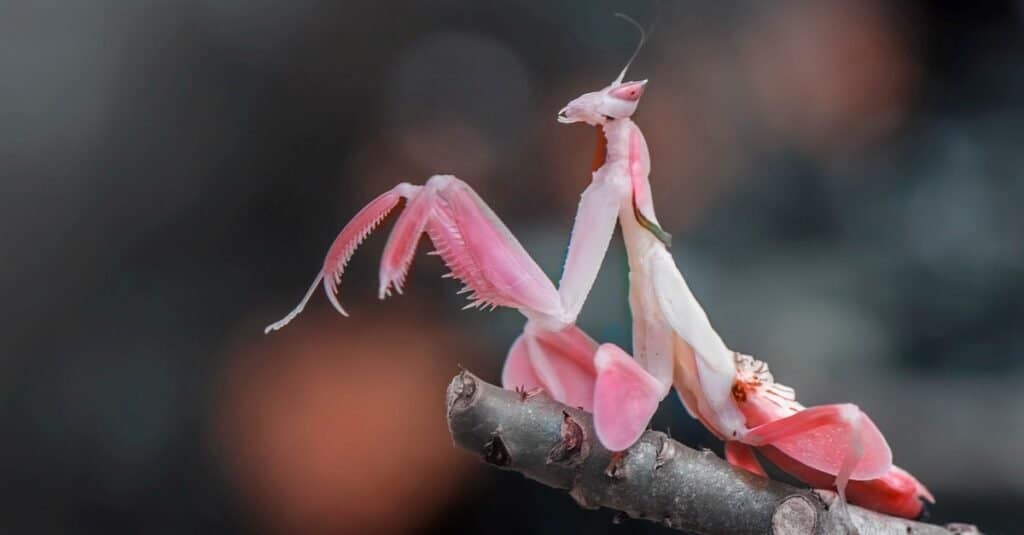
The orchid praying mantis resembles a flower to lure in prey.
©Galuh M/Shutterstock.com
- Did you know that the praying mantis will shed their exoskeleton (outer skin layer) a record 12 times before reaching adulthood? They hatch as smaller copies of adults and lose their skins as they grow into adults.
- The white praying mantis is more than likely just a phase in its growth cycle. The praying mantis turns pure white and even appears albino after each molt that nymphs go through before reaching maturity. However, the white praying mantis only exists for a short amount of time before transitioning into their adult colors of green or brown.
The photo featured at the top of this post is © Karel Bartik/Shutterstock.com
Thank you for reading! Have some feedback for us? Contact the AZ Animals editorial team.






